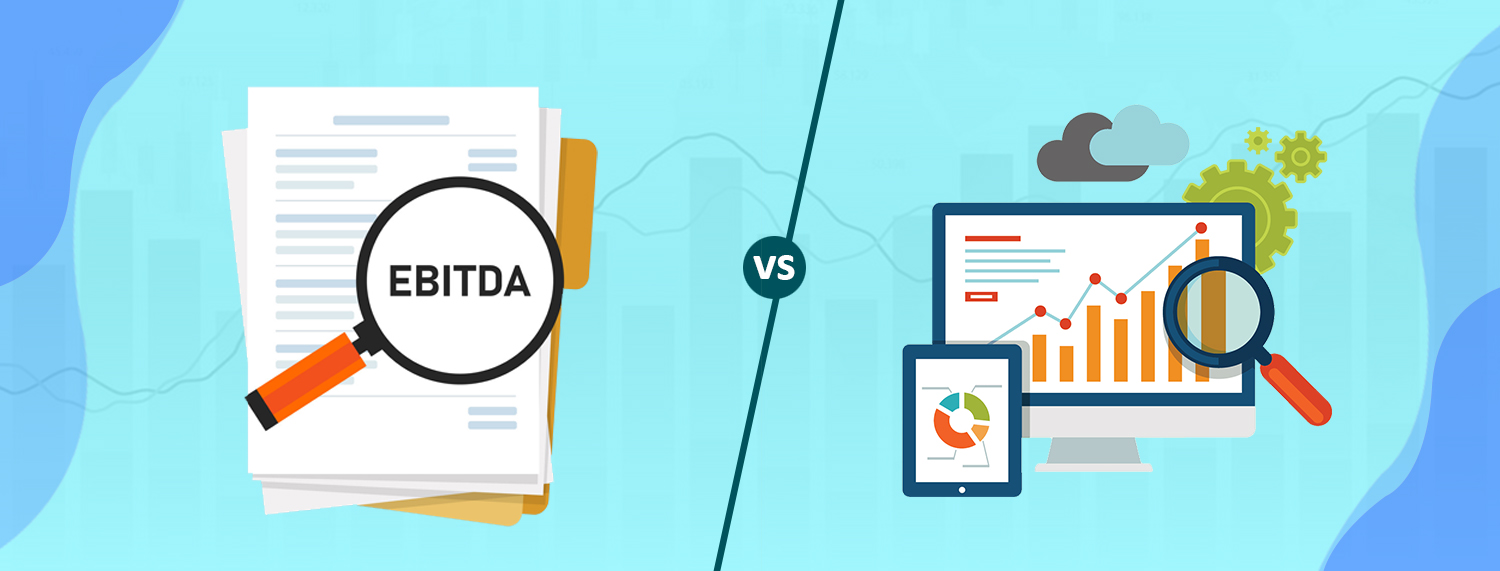Recent Posts
RISK DISCLOSURES ON DERIVATIVES
- 9 out of 10 individual traders in equity Futures and Options Segment, incurred net losses.
- On an average, loss makers registered net trading loss close to ₹ 50,000
- Over and above the net trading losses incurred, loss makers expended an additional 28% of net trading losses as transaction costs
- Those making net trading profits, incurred between 15% to 50% of such profits as transaction cost
Ebitda margin vs operating margin

When looking for a business to invest in, you must consider the company's financial stability. Even if you are not a certified evaluator, you should analyze to decide which companies will most likely provide you with the income you want.
Many will assist you in determining the profit-making capability of firms in which you may be interested in investing. The 'operating margin' and the 'EBITDA margin' (earnings before debt, tax, depletion, and amortization) are two of the most often used metrics.
While both measures are necessary, they have distinct characteristics. Let's look at what these metrics mean, how they're measured, what uses for, and how they vary.

Open a Demat Account
What exactly is EBITDA?
An EBITDA margin informs investors of a company's financial viability as well as its cash flow. It uses to assess a wide variety of businesses, regardless of their scale, composition, tax liabilities, or depreciation.
An EBITDA margin is used to assess a company's productivity and profitability and its profit capacity without considering factors such as taxes or debt funding.
EBITDA/Total sales *100 is the method for estimating the EBITDA margin.
If business ABC has an annual revenue of Rs. 10 00,000 and an EBITDA of Rs. 1,00,000, the EBITDA margin is 10%. The higher the EBITDA rate, the more operationally effective the business considered. Telecommunications, gasoline, railroads, cigarettes, alcohol, and banking are among the sectors with the largest EBITDA margins.
When deciding whether to invest in a small or large company in the same sector, the EBITDA margin is a strong predictor. Consider the following scenario: You have the option of investing in firm ABC, which has an annual revenue of Rs. 10,00,000, or firm PQR, which has a yearly revenue of INR 30, 00, 000. Since firm PQR has a slightly higher income, the face value means that you invest in it. However, when estimating the EBITDA margin, you can discover that firm ABC has a 30 percent EBITDA margin. Firm PQR, on the other hand, has it at 15%, showing a lower level of operating performance.
While the EBITDA margin is a valuable metric for determining a company's financial results, it can be unhelpful and deceptive in firms with large debts. Before deciding the company's financial fitness, those loans must consider.
What is Operating Margin?
An operating margin is a profitability ratio determined by multiplying the operating benefit by the sales by 100. It uses to calculate a company's profitability depending on its activities. The gross profit margin is the amount of income that exists after operating costs are deducted.
Let's take a closer look at the elements of the operating margin formula.
Operating profit, also known as operating profits, is the profit left after daily costs and costs of products have been deducted from net revenue. It considers only certain variables that are important to the company's activities and excludes any irrelevant variables.
Salaries, wages, employee compensation, commissions charged to contractors, raw material charges, payroll costs, promotional and publicity costs, leasing, electricity, insurance premiums, depreciation, and amortization are all part of the operating expenditures. Taxes charged, interest on debt, loss or benefit on savings, and all other profits or losses that may have arisen that are not part of the company's normal activities are not counted in this estimate.
Gross Profit – Operating Expenses – Depreciation – Amortization is the method for estimating gross profit/income.
The second factor to consider when calculating the gross profit margin is revenue, also known as net sales. That is a company's net revenue obtained by the selling of its goods or services. The terms "gross sales" and "net sales" are not interchangeable. Net sales calculate by subtracting all sales discounts or refunds from total sales.
The word "revenue" appears on the first paragraph of the income statement.
As a result, the operating margin calculates using the following formula:
Operating Profit/ Net Sales * 100.
The corresponding figure is the company's gross margin.
The higher the gross margin, the higher the revenues generated by the company's activities.
Operating Margin vs. EBITDA Margin:
Although both are standard metrics for determining a company's profitability, EBITDA and operating margin vary in several ways, including:
1. EBITDA uses to calculate a firm's gross expected profits, while the operating margin is used to measure how much profit a company will produce from its activities.
2. Modifications to amortization and depreciation will be made in EBITDA but not in operating margin.
3. EBITDA is not a Generally Accepted Accounting Principles (GAAP) metric, which means it's not used for financial statements. In contrast, operating margin is. It allows businesses to report the EBITDA metric year if it makes them seem lucrative and then discard it the following year if it does not.
As an investor, though, you may have more confidence in businesses who regularly state their EBITDA and evaluate them based on their EBITDA and other metrics' historical results.
Both EBITDA and Operating Margin have advantages and disadvantages. Take these two metrics into consideration as you pursue your investigation into the other factors influencing a company's profitability.
Contact a broker to make your savings and ensure your financial security after completing your calculations and reaching a decision.

